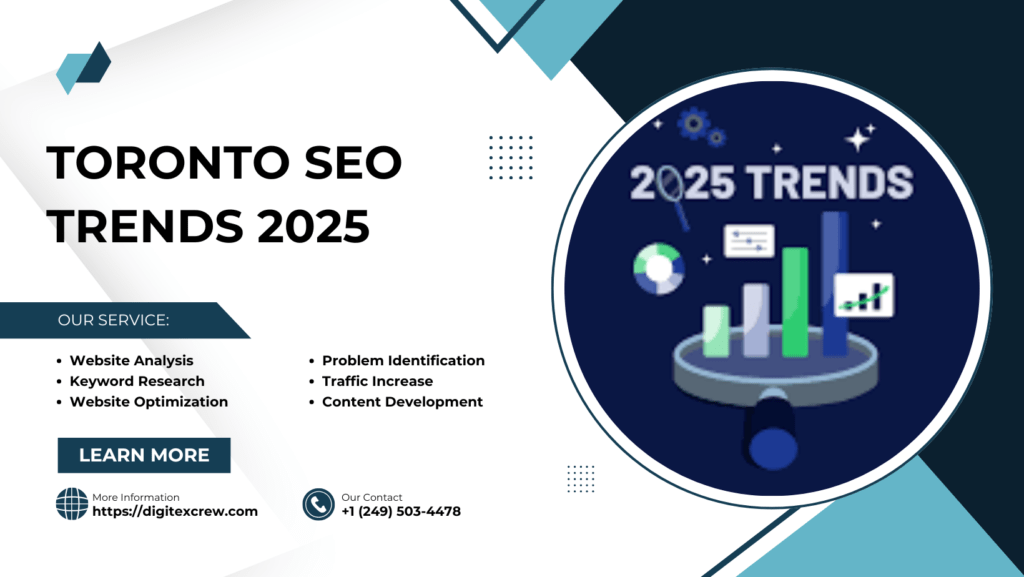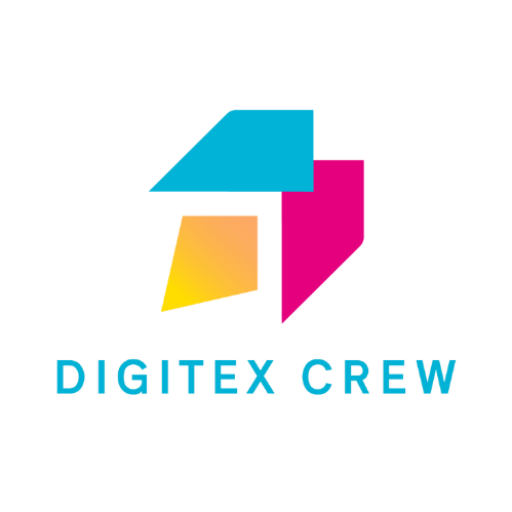Meta Title: Toronto SEO Trends to Watch in 2025
Meta Description: Stay ahead with Toronto’s 2025 SEO trends. Learn how AI, local SEO, and Core Web Vitals drive success in Canada’s competitive market.
Toronto SEO Trends to Watch in 2025
Toronto’s digital landscape in 2025 demands innovative SEO strategies to outperform competitors and attract local audiences. From AI-driven search optimization to hyperlocal targeting, businesses must adapt to Google’s evolving algorithms and shifting consumer behaviors. Below, we break down the trends shaping Toronto’s SEO landscape and actionable insights for Canadian businesses.

AI and Machine Learning in SEO
Google’s AI algorithms, including RankBrain and BERT, prioritize user intent over keyword stuffing. For Toronto businesses, this means:
- Contextual keyword targeting: Focus on long-tail phrases like “best SEO agency in Toronto” or “collision repair near Brampton” to align with localized, intent-driven searches.
- Content quality over quantity: Prioritize detailed guides (e.g., “How to Choose a Reliable SEO Partner in Toronto”) to demonstrate expertise and satisfy user intent.
- AI-powered SEO tools: Leverage tools like SEMrush or Ahrefs to analyze competitor strategies, identify gaps, and streamline keyword research.
Voice Search and Conversational Keywords
Voice search adoption is rising, driven by devices like Google Assistant and Alexa. Toronto businesses can optimize for voice queries by:
- Using natural language: Target phrases like “best Italian food near me” or “auto body shops in Toronto” in blog posts and FAQs.
- Answering FAQs: Create structured content addressing common questions (e.g., “How much does SEO cost in Toronto?”) to rank in Featured Snippets.
Core Web Vitals and Technical SEO
Google’s Core Web Vitals—Largest Contentful Paint (LCP), Cumulative Layout Shift (CLS), and Interaction to Next Paint (INP)—directly impact rankings. For Toronto businesses:
- Optimize page speed: Compress images, enable lazy loading, and use a CDN to reduce LCP below 2.5 seconds.
- Stabilize layouts: Avoid intrusive pop-ups or shifting content to minimize CLS.
- Enhance interactivity: Ensure buttons and forms respond quickly to user input for better INP scores.
Local SEO and Google Business Profile
Local SEO remains vital for attracting Toronto-area customers. Key strategies include:
- Google Business Profile (GBP) optimization:
- Complete profile: Add high-quality photos of services, staff, and facilities.
- Service areas: Specify “Brampton,” “Toronto,” and nearby suburbs to target hyperlocal searches.
- Reviews: Encourage customers to leave detailed feedback highlighting expertise and customer service.
- Local citations: List businesses in directories like TrustAnalytica or Yelp to build credibility.
Content Marketing and EEAT
Google’s EEAT (Experience, Expertise, Authoritativeness, Trustworthiness) framework emphasizes trust signals for service-based industries. Toronto businesses can strengthen EEAT by:
- Case studies: Publish before/after photos of complex projects (e.g., SEO campaigns) with client testimonials.
- Bilingual content: Offer French-language pages to cater to Toronto’s diverse population.
- Blog posts: Create guides like “How to Spot a Reliable SEO Agency in Toronto” to position the business as a trusted resource.
Competitor Analysis and Differentiation
Toronto’s competitive market demands niche targeting. Businesses can stand out by:
- Analyzing competitors: Compare keywords, content gaps, and GBP strategies of agencies like AppLabx or NoGood.
- Highlighting unique selling points: Emphasize eco-friendly practices, warranty-backed services, or same-day support in meta descriptions and content.
Zero-Click Searches and SERP Features
With more answers appearing in Featured Snippets and Knowledge Panels, Toronto businesses should:
- Optimize for FAQs: Use schema markup to structure answers to questions like “What is SEO?”.
- Target “People Also Ask”: Address related queries (e.g., “How much does SEO cost?”) in blog posts.
Mobile-First Indexing and User Experience
Google’s mobile-first indexing prioritizes mobile-friendly sites. Ensure websites:
- Load quickly on smartphones: Use AMP (Accelerated Mobile Pages) for blog posts and service pages.
- Have intuitive navigation: Simplify menus and ensure contact forms are easily accessible.
Ethical Link Building
High-quality backlinks from local directories, industry partners, or community organizations boost authority. Strategies include:
- Guest blogging: Write for automotive or tech blogs to build credibility.
- Partnerships: Collaborate with Toronto-area businesses for referrals.
Future-Proofing SEO Strategies
As Toronto’s digital landscape evolves, businesses should:
- Monitor algorithm updates: Adjust content and technical SEO based on Google’s latest changes.
- Invest in video content: Short videos demonstrating services can improve engagement and SERP visibility.
Conclusion
In 2025, Toronto SEO trends demand a blend of AI-driven optimization, local targeting, and user-centric content. By prioritizing Core Web Vitals, voice search, and EEAT, businesses can outperform competitors and attract more customers in Canada’s largest market. Partner with SEO experts to refine strategies and leverage tools like Google Business Profile to build lasting visibility.
